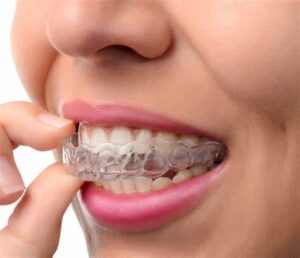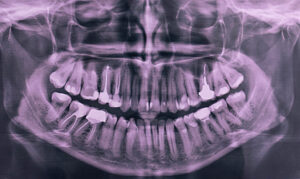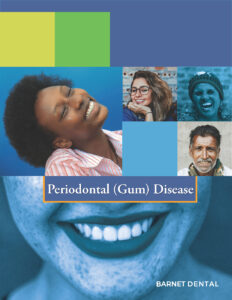Barnet Health Doctors
Contact
Hours
<ul id=”hours” style=”transition: height .3s ease;”>
<li>Monday: 9:00am – 9:00pm</li>
<li>Tuesday: 9:00am – 6:00pm</li>
<li>Wednesday: 9:00am – 9:00pm</li>
<li>Thursday: 9:00am – 9:00pm</li>
<li>Friday: 9:00am – 5:00pm</li>
</ul>
Barnet Health Doctors, nestled in the picturesque town of Livingston Manor, New York, is a premier dental institution committed to delivering top-notch dental care to patients in the community. With a dedication to excellence and patient satisfaction, the practice offers a wide range of dental services designed to promote oral health and enhance smiles. Led by a team of experienced dental professionals, Barnet Health Doctors provides personalized care in a comfortable and welcoming environment.
Dental Services
Preventive Dentistry
- Comprehensive Examinations: Thorough dental check-ups to assess oral health and detect any signs of dental issues.
- Professional Cleanings: Routine cleanings to remove plaque and tartar buildup, preventing gum disease and cavities.
- Dental Sealants: Protective coatings applied to the chewing surfaces of molars to prevent decay, especially in children.
Restorative Dentistry
- Fillings: Treatment of cavities with tooth-colored composite fillings for a natural-looking restoration.
- Crowns and Bridges: Custom-made dental crowns and bridges to restore and strengthen damaged or missing teeth.
- Dental Implants: Permanent tooth replacement option that looks, feels, and functions like natural teeth.
Specialized Dental Care
Orthodontics
- Braces: Traditional metal braces and clear aligner therapy to correct misaligned teeth and bite issues.
- Retainers: Custom-fitted retainers to maintain the results of orthodontic treatment and prevent teeth from shifting.
Endodontics
- Root Canal Therapy: Treatment to save and repair infected or damaged teeth by removing infected pulp and sealing the root canal.
- Apicoectomy: Surgical procedure to remove the tip of the tooth root and seal the root canal to treat persistent infections.
Patient Care
Personalized Treatment Plans
- Individualized Consultations: Detailed discussions and treatment planning sessions to address each patient’s unique dental needs and goals.
- Collaborative Approach: Working closely with patients to develop treatment plans that align with their preferences and budget.
Comfort and Convenience
- Relaxing Environment: Creating a comfortable and welcoming atmosphere to ensure patients feel at ease during their dental visits.
- Pain Management: Utilizing gentle techniques and advanced anesthesia options to minimize discomfort during procedures.
Invisalign
Invisalign is a popular orthodontic treatment option that uses clear, custom-made aligners to straighten teeth and correct various bite issues without the need for traditional metal braces. This innovative system offers a discreet and convenient alternative to braces, allowing patients to achieve a straighter smile with minimal disruption to their daily lives. Here's an overview of Invisalign:
- Indications:
- Invisalign is suitable for treating a wide range of orthodontic issues, including crowded teeth, gaps between teeth, overbites, underbites, crossbites, and open bites.
- It is commonly used in both teens and adults who desire a more aesthetic and comfortable alternative to traditional braces.
- Treatment Planning:
- Before beginning Invisalign treatment, the dentist or orthodontist will conduct a comprehensive examination, including dental impressions, photographs, and digital scans of the patient's teeth and bite.
- Using specialized software, the dental provider will create a customized treatment plan that outlines the step-by-step movements of the teeth and the anticipated final result.
- Aligner Fabrication:
- Based on the treatment plan, a series of clear, BPA-free plastic aligners are custom-made for the patient using advanced 3D printing technology.
- Each set of aligners is designed to gradually and precisely move the teeth into the desired position according to the treatment plan.
- Treatment Process:
- The patient wears each set of aligners for about 1-2 weeks, as prescribed by the dentist or orthodontist.
- The aligners should be worn for 20-22 hours per day, only removing them for eating, drinking (except water), brushing, and flossing.
- Approximately every 1-2 weeks, the patient switches to the next set of aligners in the series, advancing through the treatment plan as the teeth gradually move into alignment.
- Monitoring Progress:
- Throughout the Invisalign treatment process, the patient will have periodic check-up appointments with the dentist or orthodontist to monitor progress and ensure that the treatment is proceeding as planned.
- Adjustments or refinements to the treatment plan may be made as needed to achieve the desired outcome.
- Post-treatment Retention:
- Once the final set of aligners is completed and the desired tooth position is achieved, the patient may be provided with a retainer to maintain the results of the treatment.
- Retainers are typically worn at night to prevent the teeth from shifting back to their original position.
Invisalign offers several advantages over traditional braces, including:
- Aesthetic appeal: The clear aligners are virtually invisible, making them a discreet option for orthodontic treatment.
- Comfort: The smooth plastic aligners are comfortable to wear and less likely to cause irritation to the cheeks and gums compared to metal braces.
- Convenience: The removable nature of the aligners allows for easy eating, brushing, and flossing without dietary restrictions or difficulty with oral hygiene.
- Predictability: Invisalign treatment is carefully planned using advanced technology, resulting in predictable and precise tooth movements.
Overall, Invisalign is an effective and popular orthodontic treatment option for patients seeking a more discreet, comfortable, and convenient way to achieve a straighter smile. If you are considering Invisalign treatment, it's important to consult with a qualified dentist or orthodontist to determine if it is the right option for your individual needs and orthodontic concerns.
X-Rays
Dental X-rays, also known as dental radiographs, are diagnostic imaging techniques used by dentists to visualize and assess the internal structures of the teeth, jaws, and surrounding tissues that are not visible during a regular dental examination. Here's an overview of dental X-rays and their key aspects:
- Purpose of Dental X-Rays:
- Dental X-rays serve various purposes in dental care, including:
- Detecting tooth decay (cavities) between teeth or under existing fillings.
- Evaluating the health of the tooth roots and surrounding bone.
- Assessing the development and eruption of permanent teeth in children and adolescents.
- Detecting abnormalities, such as cysts, tumors, or impacted teeth.
- Planning and monitoring orthodontic treatment (braces or aligners).
- Evaluating the extent of dental trauma or injury.
- Assessing the bone density and structure for dental implant placement.
- Types of Dental X-Rays:
- There are several types of dental X-rays commonly used in dental practice, each serving a specific purpose:
- Bitewing X-rays: Used to detect cavities between the back teeth (molars and premolars) and assess the fit of dental fillings.
- Periapical X-rays: Provide detailed images of the entire tooth, including the crown, root, and surrounding bone.
- Panoramic X-rays: Capture a broad view of the entire mouth, including the jaws, teeth, sinuses, and temporomandibular joints (TMJ).
- Occlusal X-rays: Focus on a specific area of the mouth to evaluate the development of teeth or detect abnormalities.
- Cephalometric X-rays: Used in orthodontics to assess the relationship between the teeth, jaws, and facial structures.
- Radiation Safety and Dose:
- Dental X-rays emit very low levels of radiation, and modern X-ray equipment and techniques minimize radiation exposure to patients.
- Dentists adhere to strict radiation safety protocols, such as using lead aprons and thyroid collars to shield the patient's body from unnecessary exposure.
- The benefits of dental X-rays in diagnosing and preventing oral health problems far outweigh the minimal risks associated with radiation exposure.
- Procedure and Technique:
- During a dental X-ray procedure, the patient is positioned in a chair or standing next to the X-ray machine, and protective aprons or shields are placed to cover areas not being imaged.
- The X-ray machine is positioned close to the area of interest, and the dentist or radiology technician instructs the patient to hold still and bite down on a film or digital sensor placed inside the mouth.
- The X-ray machine emits a small burst of radiation, which penetrates the tissues and creates an image of the teeth and surrounding structures on the film or sensor.
- Digital X-ray technology allows for instant image capture and viewing on a computer monitor, reducing the time and effort required to develop traditional X-ray films.
- Interpretation and Diagnosis:
- After acquiring dental X-ray images, the dentist carefully examines and interprets the radiographic findings to assess the patient's oral health status and formulate an appropriate treatment plan.
- Dental X-rays help dentists identify dental issues early, allowing for timely intervention and treatment to prevent further complications.
- Dentists may compare current X-ray images with previous ones to monitor changes in the patient's oral health over time and evaluate the effectiveness of treatment interventions.
- Patient Education and Communication:
- Dentists often use dental X-ray images as visual aids to educate patients about their oral health condition, treatment options, and preventive measures.
- Patient communication and informed consent are essential aspects of dental X-ray procedures, and dentists discuss the benefits, risks, and necessity of X-rays with their patients before obtaining consent for imaging.
In summary, dental X-rays are valuable diagnostic tools that enable dentists to visualize and assess the internal structures of the teeth and jaws, aiding in the diagnosis, treatment planning, and monitoring of various oral health conditions. By utilizing appropriate X-ray techniques and adhering to radiation safety protocols, dentists ensure the safe and effective use of X-rays in dental practice.






